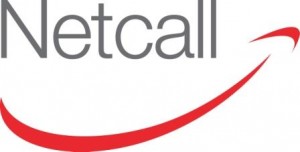Customers expect to be able to reach out to a contact centre using the channel of their choice. This expectation has increased the pressure on contact centres to provide a multichannel service.

To achieve this, many organisations attempt a channel shift approach, moving customer interactions to lower cost channels such as self-service or web chat, giving customers a greater choice of channels and in turn, reducing effort. The comparative handling costs make for a compelling proposition as the following table suggests:
The figures shown in the table above were based on research conducted in the US. Figures elsewhere may vary but, as a general rule, the handling costs for email and web chat appear to be much lower than for voice. As a consequence, contact centre managers are actively pursuing these and other new channels as part of their channel shift strategy. The assumption is that lower per unit handling costs will directly result in lower operational costs. If only it were that simple!
Headline costs may fall but if the new channels are not effectively integrated, contact centres may experience greater inefficiencies and hidden costs that are difficult to find. Consider the impact of these hidden costs:
Hidden impact – Average Handling Time increases
Ineffective integration leads to a significant increase in Average Handling Time (AHT) as agents need to tab between different application screens to achieve the goal of the call. Separate systems require multiple data look up and data entry which introduces inaccuracies and data problems for the future. This is a concern, as AHT directly impacts customer satisfaction levels.
Hidden impact – the costs of back-office inefficiency
All systems require some level of support. It is the interdependency between systems and support that can cause problems for many contact centres. Consider the following:
System Complexity; organisations tend to write an Application Programming Interface (API) to accommodate a new channel like web chat. It becomes yet another application on an agent’s desktop and demands they learn a new system, screen layout and workflow. It is complex to administer and manage
IT Support; every system integration or update will require IT support. The IT team will need to test for potential conflicts with other channels and in-house systems before they can release the change. The more complex the infrastructure, the greater the effort, time and cost involved
Training; whenever an application is updated, new training will be required. This affects agent time and can also represent a significant interdepartmental cost. The more channels handled, the greater the level of complexity and cost
A planned multichannel migration strategy
The points above highlight why you need to carefully plan the way your multichannel environment will evolve. A sensible first step would be to introduce a new channel, such as web chat or social media, as a standalone system. This is probably the quickest deployment option and allows the organisation freedom to develop the processes required to effectively introduce the channel within the contact centre.
However, managers need to be mindful that adding another standalone system to the mix increases the complexity of the operational environment. Greater complexity tends to increase the risk of failure and the associated time and effort required to resolve. Longer term, multichannel contact centres should strive for simplicity and low cost management. Consequently, it makes sense to plan not only how new channels can be introduced to the contact centre, but also how they can evolve into an integrated environment that provides the lowest total cost of ownership. To do this it is best to go back to basics. Contact centres have essentially two tasks to complete:
Accommodate inbound interactions at any time of day and through any channel
Route interactions to the agent or tool most able to resolve the enquiry first time, quickly and at the lowest cost
Whilst many products are available to achieve these tasks, only a unified agent view offers a sustainable solution. A unified agent solution coordinates all customer interactions – voice, email, web chat and social media – through a single user interface. This offers some real benefits:
Agents see a common, real-time view of a customer interaction and its related history
– Average Handling Time is significantly reduced
– System navigation is streamlined and support teams only have one vendor to manage
– Training and support is minimised, allowing agents to become more productive
– Developing an effective multichannel integration strategy is critical for those serious about reducing costs whilst improving customer satisfaction and productivity.
For additional Information see Netcall’s Company Profile



